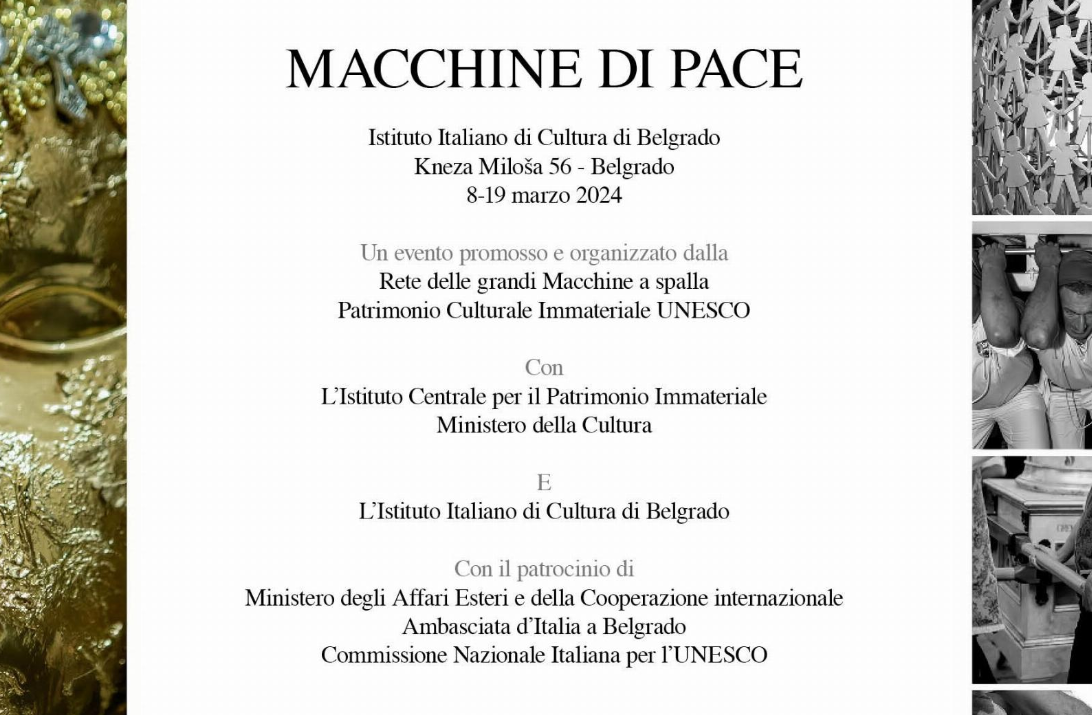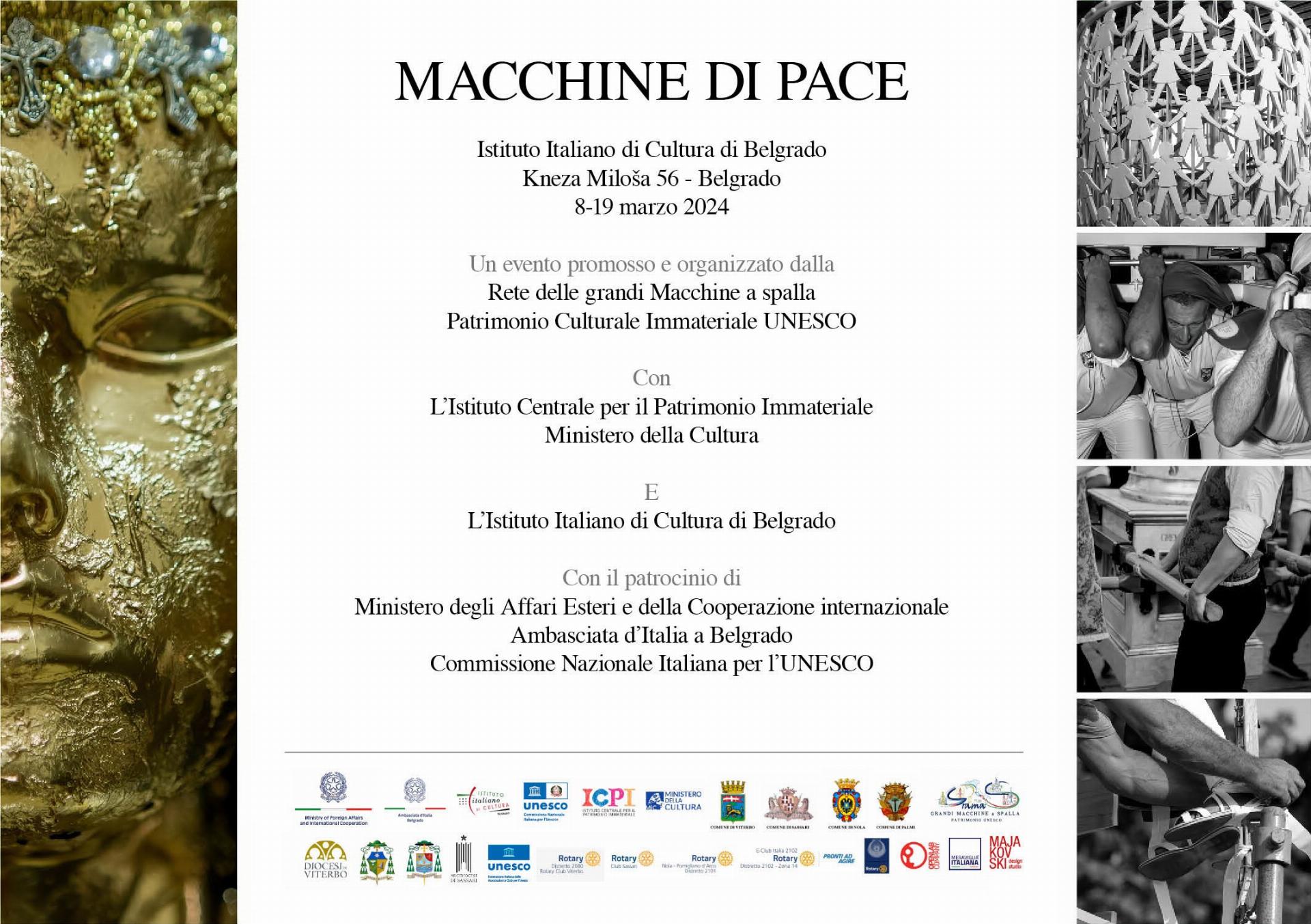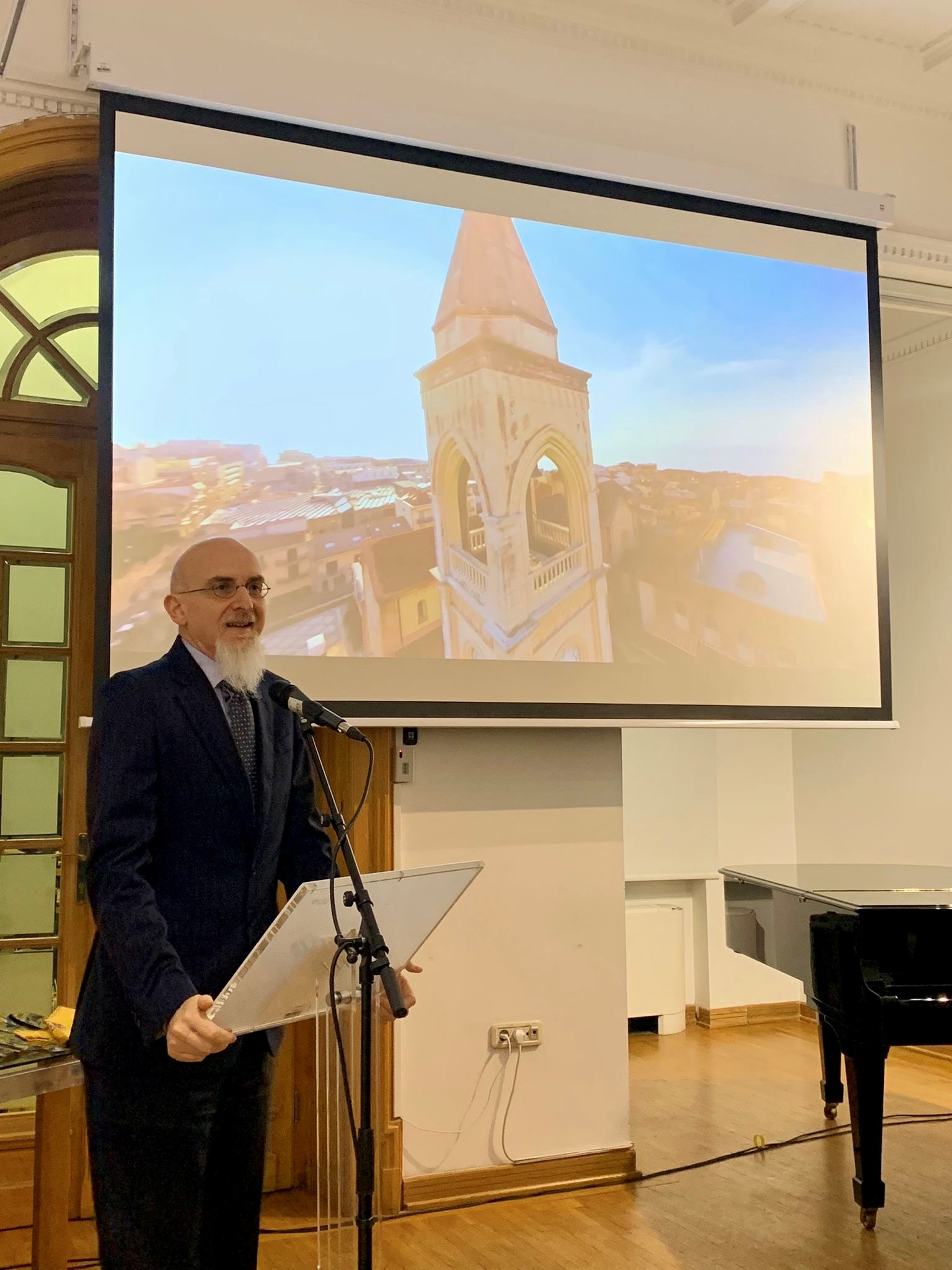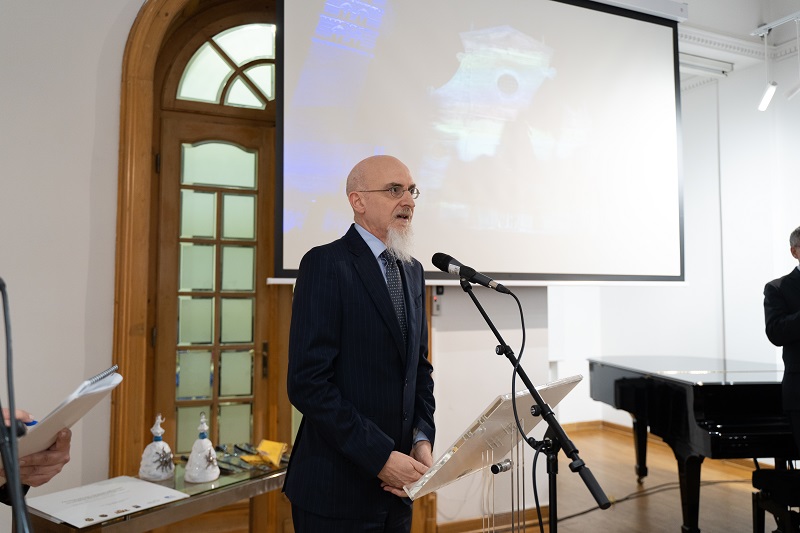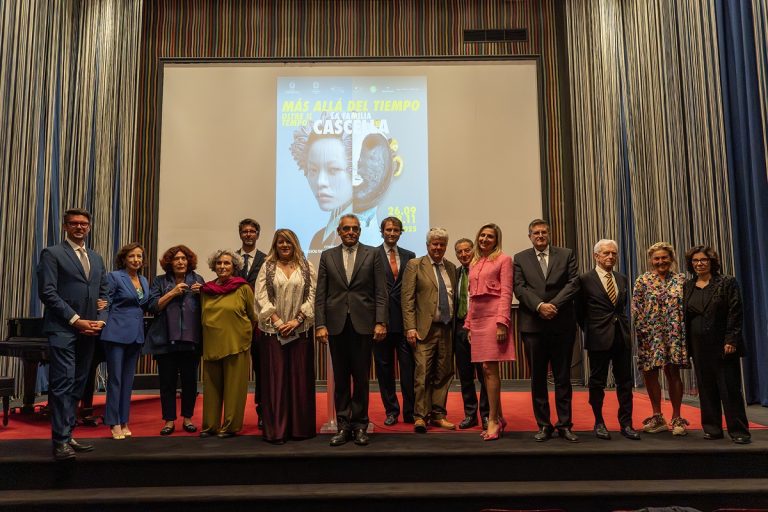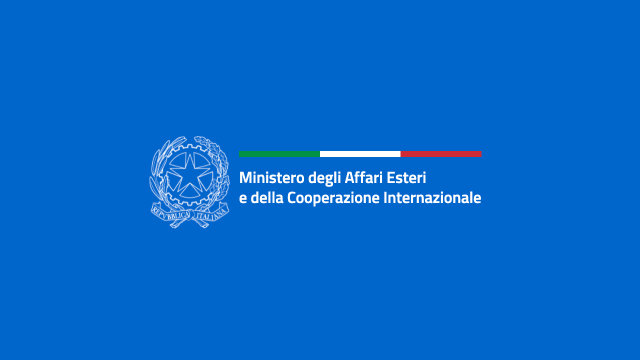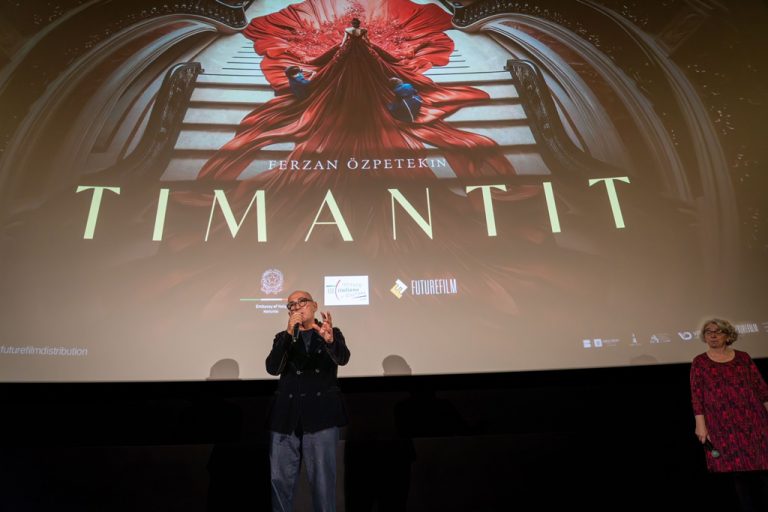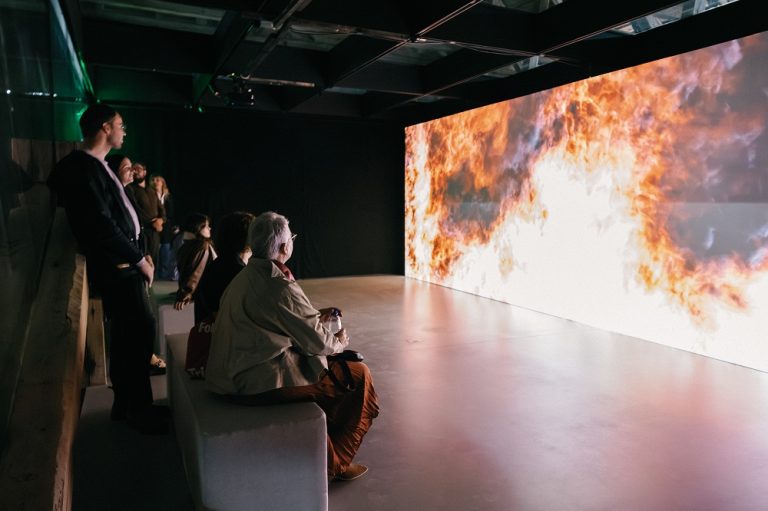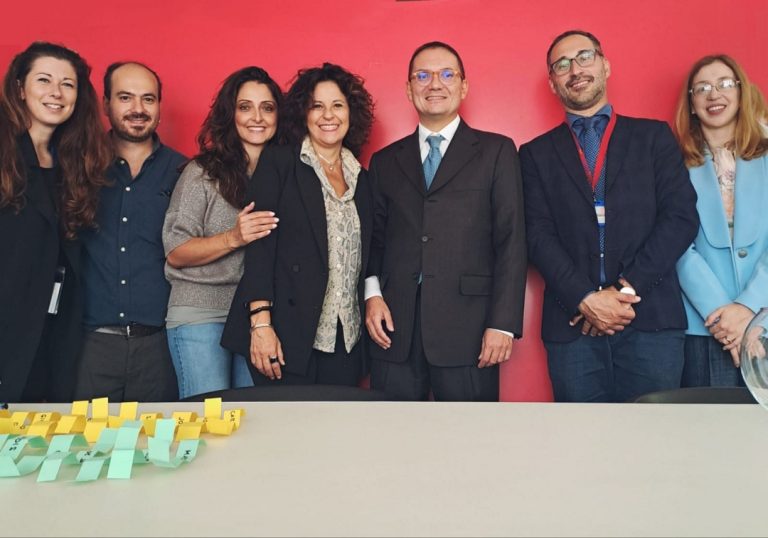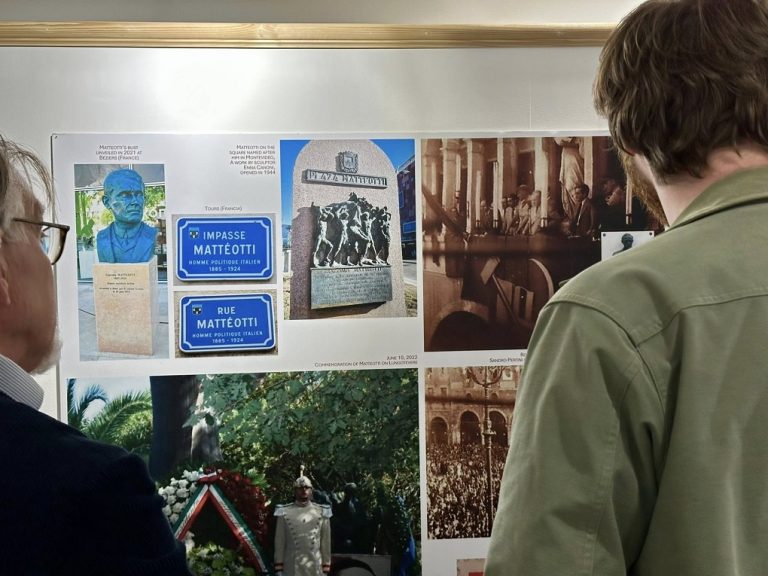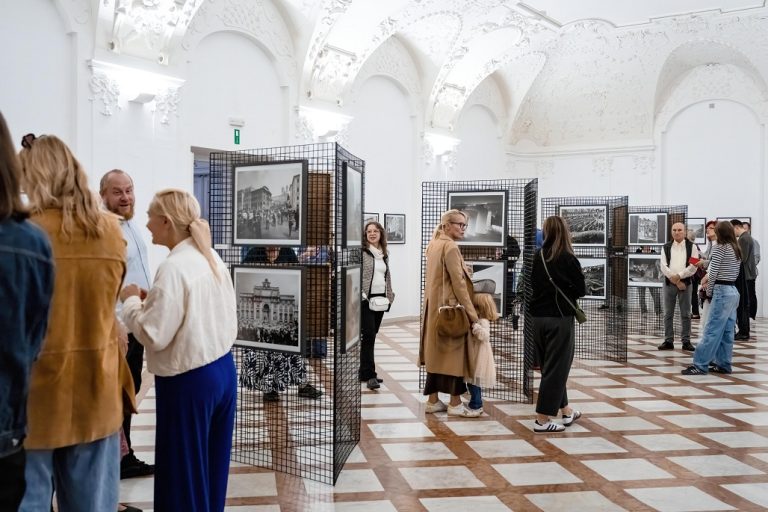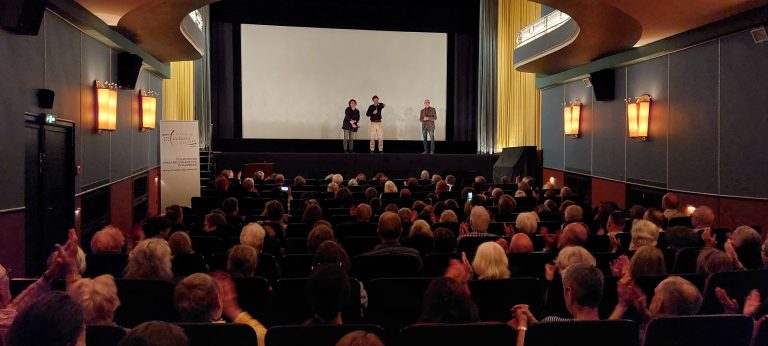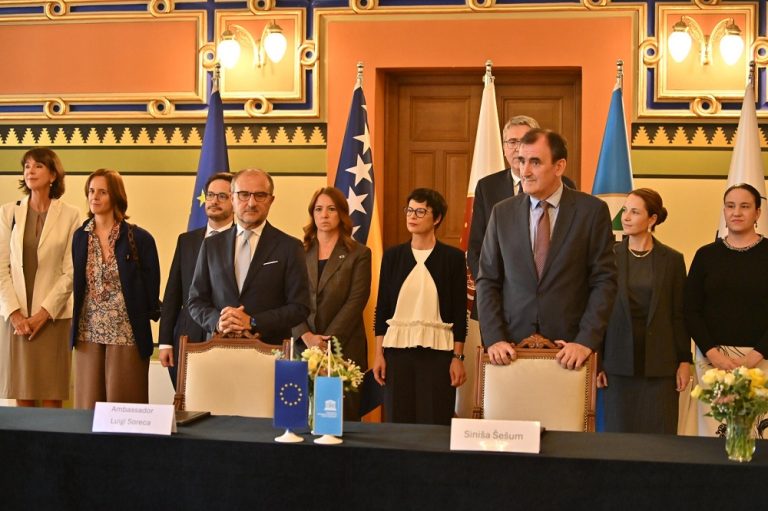Since 8 March, the Italian Cultural Institute of Belgrade has relaunched the “Machines for Peace – Machine di Pace” installation exhibition proposed by “Rete delle feste delle grandi Macchine a spalla italiane” (Italian celebrations of big shoulder-borne processional structures network), and part of the UNESCO World Heritage list since 2013. The exhibition, now on display for the third time after the Bethlehem Peace Centre and the Baroque Chapel in the Italian Embassy in Prague, is sponsored by the Ministry of Foreign Affairs and International Cooperation and held under the patronage of the same Ministry and of the Italian National Commission for UNESCO, the Italian Embassy in Belgrade, the Municipalities, Archdioceses and Dioceses of Viterbo, Sassari, Nola and Palmi. The project, realised, coordinated and implemented by Patrizia Nardi is made in partnership with ICPI – Central Institute for Intangible Heritage of the Ministry of Culture.
“Machines for Peace – Macchine di Pace” in Serbia was organised in collaboration with the Italian Cultural Institute of Belgrade, featuring four of the most ancient holidays of the Mediterranean tradition through images, sounds, colours, and suggestions: the Transportation of the Macchina di Santa Rosa in Viterbo, the Varia di Palmi in Calabria, the Faradda dei Candelieri in Sassari and the Festa dei Gigli in Nola. To celebrate the first 10th anniversary of UNESCO’s recognition in the list of Intangible Cultural Heritage, the “Italian celebrations of big shoulder-borne processional structures network” proposed the theme of peace among the targets set out in the UNESCO Medium-Term Strategy 2022-2029, and, on the occasion of the International Women’s Day, the theme of gender equality.
After the opening greetings by Roberto Cincotta, Director of the Italian Cultural Institute of Belgrade, the floor was left to Italian Ambassador Luca Gori, the Secretary for Culture of the City of Belgrade, Nataša Mihailović Vacić, the exhibition’s organiser and International Application Expert for UNESCO, Patrizia Nardi, Giancarlo Martinengo, Deputy Councillor of the Municipality of Viterbo on behalf of the institutional partners of the Network and to Professor Giorgio Andrian from the Venice International University, who coordinated a meeting on cultural diplomacy with Serbian experts. The Italian guests, the communities of the “Italian celebrations of big shoulder-borne processional structures network” (GRAMAS – Grandi Macchine a Spalla), and the President of the Festa dei Gigli Foundation of Nola also took the floor.
Photo credits: Igor Jankovki

